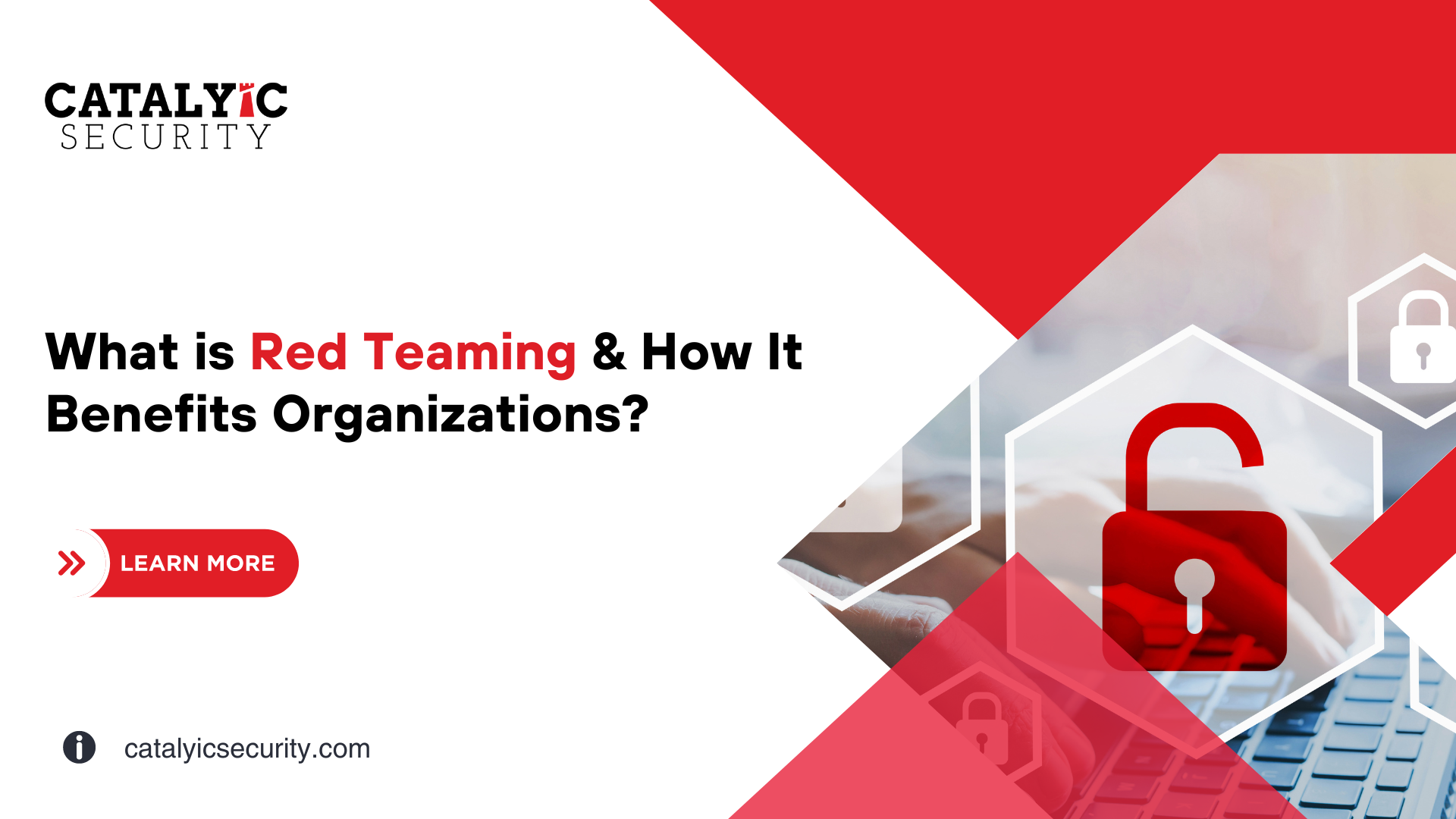In today’s digital era, as cyber threats become increasingly sophisticated, organizations must adopt proactive measures to safeguard their assets and data. Red Teaming emerges as a pivotal strategy in this landscape, offering a dynamic approach to testing and enhancing an organization’s defenses against potential cyber-attacks. This comprehensive guide explores the concept of Red Teaming, its methodologies, and the substantial benefits it provides to organizations.
Introduction to Red Teaming
Red Teaming is an adversarial approach designed to simulate real-world attacks on an organization’s critical systems and infrastructure. This method employs a team of ethical hackers who use the same techniques as malicious attackers to uncover vulnerabilities, test defenses, and evaluate the effectiveness of incident response mechanisms.
Key Components of Red Teaming
Red Teaming encompasses several components, each focusing on different security aspects:
- Physical Security Penetration: This involves testing the organization’s physical barriers, such as locks, security passes, and surveillance equipment, to assess their effectiveness in deterring unauthorized access.
- Social Engineering: Red Teams employ tactics like phishing, baiting, and pretexting to evaluate employees’ awareness and response to social manipulation.
- Application and Network Security: Through rigorous penetration testing and vulnerability assessments, Red Teams identify weaknesses in the organization’s software and network infrastructure.
- Digital Footprint Analysis: Understanding the publicly available information that could be used by attackers to craft targeted attacks.
- Advanced Persistent Threat (APT) Simulation: Mimicking state-sponsored or highly sophisticated criminal group activities to test the organization’s resilience against sustained attacks.
- Insider Threat Simulation: Evaluating the potential damage from disgruntled or malicious insiders, often overlooked in traditional security assessments.
Methodology
A successful Red Teaming operation follows a structured methodology that includes enhanced stages such as:
Objective Setting: Aligning the Red Team’s goals with the organization’s critical assets and potential threat scenarios.
Threat Modeling: Developing scenarios based on the most likely and damaging attacks specific to the organization’s industry and operations.
Blind Testing: Conducting the exercise without prior notice to security personnel, mimicking an actual attack scenario for a genuine response evaluation.
Benefits of Red Teaming for Organizations
Red Teaming offers a multitude of benefits that enhance an organization’s security posture:
Uncovering Hidden Vulnerabilities
The complexity of modern IT environments means that some vulnerabilities may go unnoticed by conventional security measures. Red Teaming’s holistic approach ensures that even the most subtle weaknesses are exposed, allowing for timely remediation.
Real-World Attack Simulation
Simulating an attack provides invaluable insights into how an organization’s defenses would stand up under real-world conditions. This not only tests the technical aspects of security but also evaluates the readiness and effectiveness of response teams.
Enhancing Security Awareness and Culture
A successful Red Teaming exercise goes beyond technical findings; it also serves as a powerful tool for enhancing security awareness and culture within an organization. Employees become more vigilant and proactive in identifying and reporting potential security threats.
Compliance and Risk Management
For organizations subject to stringent regulatory requirements, Red Teaming can demonstrate a commitment to maintaining a robust security posture. This proactive approach can significantly mitigate risks associated with data breaches and cyber-attacks, protecting the organization from potential fines and reputational damage.
Implementing Red Teaming in Your Organization
To effectively implement Red Teaming, organizations should adhere to the following best practices:
- Engage External Experts: While internal teams can conduct Red Teaming, external experts bring a fresh perspective and specialized skills that can enhance the exercise’s effectiveness.
- Comprehensive Debriefing: After the exercise, it’s crucial to hold a debriefing session where findings, recommendations, and strategies for improvement are discussed in detail.
- Continuous Improvement: Red Teaming should not be a one-time event. Regular exercises are essential for keeping pace with evolving threats and ensuring continuous improvement in security practices.
Frequently Asked Questions
Q1: How does Red Teaming differ from penetration testing?
A2: While penetration testing focuses on identifying vulnerabilities in systems and networks through a scoped and specific approach. Red Teaming provides a broader, more adversarial simulation. It tests an organization’s detection and response capabilities to a variety of attack vectors. Also, includes physical, digital, and social engineering threats, under a less constrained environment.
Q2: Who should perform Red Teaming exercises?
A2: Red Teaming exercises should be performed by skilled, ethical hackers or cybersecurity professionals with extensive knowledge of attack methodologies. Often, organizations engage external Red Teams to ensure an unbiased assessment and to leverage specialized expertise.
Q2: How often should an organization conduct Red Teaming exercises?
A2: The frequency of Red Teaming exercises depends on several factors, including the organization’s size. A;so, the nature of its business, and the evolving threat landscape. Generally, conducting a Red-Teaming exercise annually or biannually is recommended, with adjustments based on specific industry risks or when significant changes occur within the organization’s infrastructure.
Q3: Can Red Teaming help with compliance requirements?
A3: Yes, Red Teaming can significantly aid in compliance efforts by demonstrating an organization’s commitment to a robust cybersecurity posture. It can help meet regulatory requirements that mandate comprehensive security assessments and provide evidence of due diligence in protecting sensitive information.
Conclusion
Red-Teaming represents a critical step forward in an organization’s cybersecurity strategy. By adopting this proactive and comprehensive approach, organizations can uncover and address vulnerabilities. Enhance their defense mechanisms, and build a culture of security awareness. In the face of ever-evolving cyber threats, Red-Teaming provides the insights and experiences necessary to protect an organization’s assets, data, and reputation effectively.

